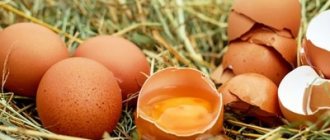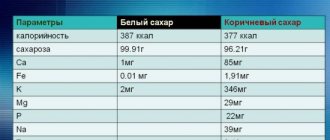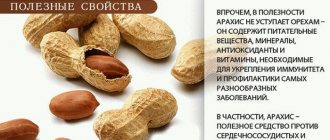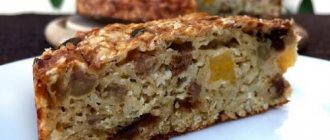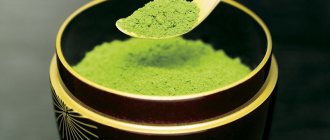Counting calories is a very scrupulous matter. As a rule, people who are struggling with excess weight actively begin to engage in this. Calculating daily calorie intake in some diets is an attempt to quantify food intake. In other words, a person counting calories is trying to find out the amount of energy received by the body per day. This is a righteous cause, but you still shouldn’t get carried away with it. Any calculation can only give a relative value. In the article I will tell you how many calories are contained in tea without sugar and in drinks with various additives.
Do not forget that calorie counting is carried out not only by people who are losing weight, but also by those who are trying to gain weight. Yes! There are such people too, and you shouldn’t be surprised. Athletes or athletes often do the same counting.
How many calories are in tea without sugar?
If you're eating moderately to lose weight or keep it off, you have to make every calorie count. One could neglect the caloric content of this drink and not think about tea at all (after all, it is not meat, not butter or bread - high-calorie foods, the consumption of which greatly affects weight correction).
Important! Often in the literature on diets and healthy eating, one comes across the idea that tea is a zero-calorie product. This is nothing more than a rough “rounding to zero” against the background of more “serious” products, whose calories count in tens and hundreds.
But you drink a fair amount of the drink throughout the day. And so week after week, a whole month and all my life. Therefore, the question of how much tea is drunk and in what form is extremely important:
- what type and variety;
- with or without sugar;
- with added milk or cream;
- with jam, honey;
- with herbal supplements, etc.
So, here's what scientists have found out about tea in terms of its calorie content:
- black (3-5 kcal);
- white (3-4 kcal);
- green (1 kcal);
- yellow (2 kcal);
- hibiscus (1-2 kcal);
- fruity, herbal (2-10 kcal).
Moreover, the same variety does not change its calorie content if it is produced in large-leaf, small-leaf or soluble (granulated or bagged) form. It is obvious that the energy capacity of black tea is noticeably higher.
Useful material
| Useful material: | Daily norm | Tea without sugar: contained in 100 ml. |
| calcium | 13% | <104 mg |
| phosphorus | 0% | 1.8 mg |
| magnesium | 1% | 2.7 mg |
| potassium | 1% | 10.1 mg |
| sodium | 0% | 2.5 mg |
| iron | 0% | 0.0 mg |
| copper | 4% | 0.002 mg |
| zinc | 1% | <0.127 mg |
| manganese | 5% | 0.1 mg |
| selenium | 18% | <10 mcg |
| iodine | 0% | 0.6 mcg |
How many calories are in tea with honey?
To calculate how many calories are in tea with honey, you need to know the energy value of the latter.
The indicator depends on the type of honey and ranges from 310-420 kcal per 100 grams. 100 milliliters of flower and linden honey contains approximately 380 kcal, buckwheat honey contains 300-310 kcal, and dark honey can contain 415 kcal. The denser the sweetness, the higher the calorie content.
The amount that fits in a teaspoon depends on the density. If the honey is liquid, then about 10 grams. Therefore, a cup of tea with two spoons of bee treat contains 62-88 kcal.
It turns out that natural sweetness is more satisfying than sugar. But sugar contains nothing but carbohydrates, and honey contains a significant amount of vitamins, minerals and amino acids. Despite its calorie content, when consumed in moderation, it promotes weight loss. Especially if you add a pinch of cinnamon to your tea.
Nutrients
| Nutrients | Tea without sugar: contained in 100 ml |
| protein | 0.1 g |
| carbohydrates | |
| - of which sugar | 0.0 g |
| - of which starch | 0.0 g |
| - of which dietary fiber | 0.0 g |
| lipids | 0.0 g |
| - of which cholesterol | 0.0 mg |
| - of which saturated fatty acids | 0.0 g |
| - of which monounsaturated fatty acids | 0.0 g |
| - of which polyunsaturated fatty acids | 0.0 g |
| water | 100 ml |
| alcohol | 0 g |
How many calories are in tea with sugar and milk?
Regardless of which type of hot drink you choose, there is no need to worry about gaining excess weight. However, if you add sugar, milk, jam, cream, etc., the indicator will increase significantly. Ginger has virtually no effect on the “value”, 1 spoon contains only 2 kcal, in addition, the product is able to neutralize toxins, lower sugar levels and is an assistant in the fight against cellulite.
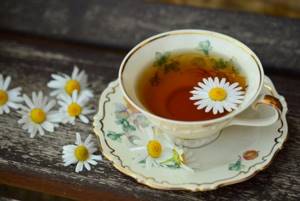
The safest additives are considered to be lime and lemon juice (1 tbsp contains only 3 kcal and 5 kcal), as well as milk with 0% fat (5 units).
Calorie content depending on processing methods
After the tea is collected, it is processed: dried, rolled, oxidized with enzymes, and dried. Each of these stages determines how many calories the tea ultimately contains.
For example, 100 grams of loose (long) tea contains 130 kilocalories, bagged tea - 90, pressed (leaf) - 151, soluble (extracted) - 100, granulated - 120, capsule - 125.
Don't be scared by big numbers! You don’t brew 100 grams at once! A tea bag weighs only 2 grams (including the bag), that is, it contains only 1.8 kilocalories.

Recipes for dishes with tea drinks
Not only an aromatic drink is prepared from dried tea leaves, but also some types of baked goods: pies, soufflés, cakes. There are several dozen cocktails with iced teas, mainly white, jasmine and green. And over the past few years, teas have been actively used to create smoothies.
Mint drink with honey
Dried or fresh mint leaves (melissa) added to tea give the drink menthol freshness and an incomparable aroma. Required ingredients:
- boiling water (500 ml);
- ground cinnamon (1.5 g);
- clove powder (1.5 g);
- and (1 branch each);
- green tea (1 teaspoon).
The greens need to be washed, the leaves torn off the stems and placed in a teapot. Pour 1 teaspoon of dry green tea into it, add cinnamon and cloves, pour boiling water over it and cover with a lid. The drink must steep for at least one hour. The tea should be served chilled with honey and chopped lime or lemon. Calorie content is 34.8 kcal/100 ml.
Ginger drink
Teas with ginger root came to us from the Middle East. To prepare such a warming drink you will need:
- white tea, tea leaves (1 dessert spoon);
- ginger root (10-12 g);
- ground black pepper (one pinch);
- lemon or lime (100 g);
- water (1500 ml).
The ginger root needs to be washed, peeled off the top skin and grated on a fine grater. The lemon should be cut into two halves and squeeze the juice out of each. Place a saucepan on the stove and bring 1.5 liters of water to a boil, add grated ginger and tea leaves. Reduce heat and simmer the drink for 3-5 minutes. Then pour in lemon juice, add lemon peels and a pinch of black pepper. Turn off the heat, cover the pan with a towel, and leave for 10-12 minutes. The tea should be strained before serving. It is best to drink the drink warm or with natural honey. The energy value of tea is 18 kcal.
Pie for tea
To give baked goods a special taste and a pleasant color, water or milk is often replaced with brewed tea. To bake a pie you will need the following products:
- premium wheat flour (275 g);
- butter (110 g);
- black tea without sugar (200 ml);
- baking soda (1/2 teaspoon);
- raspberry or strawberry jam (3 dessert spoons);
- sugar (15 g);
- egg.
In a deep container, knead the butter, add granulated sugar, pour in the tea infusion and stir. Break one chicken egg into the mixture and beat the whole mass with a mixer. Gradually sift the flour through a sieve and mix everything again. In a separate bowl, mix jam and soda, then combine both compositions. Grease a baking dish with cooking oil and lay out the resulting dough. Bake the pie in the oven at approximately 180°C for about half an hour. Before serving, lightly sprinkle with powdered sugar. The calorie content of baked goods is 282 kcal/100 g.
Basil tea
Drinks with basil have a powerful tonic effect. To prepare tea you will need the following components:
- hibiscus (1 tablespoon);
- purple basil (40 g);
- green (25 g);
- honey (2 dessert spoons);
- water (750 ml).
The basil needs to be washed, cut into pieces and placed in a teapot. Pour hibiscus into it, put pieces of green apple and pour boiling water over it. The tea should be allowed to brew for about half an hour, then add honey and pour into glasses. The energy value of the infusion is 12 kcal.
Green tea ice cream
To make homemade ice cream you will need the following products:
- cow's milk 3.2% (100 ml);
- condensed milk (half a can);
- sugar (9 dessert spoons);
- green tea (5 tablespoons).
Heat the milk and dissolve the sugar in it, then pour in strong green tea, stir in condensed milk and, pour into a container, freeze a little. The frozen mixture must be beaten with a blender until an airy consistency is formed and, after distributing into portioned molds, put in the freezer for another 4 hours. The calorie content of the dessert is 285 kcal.
Prunes in green tea
To treat yourself to a delicious dessert you need to prepare:
- large (50 g);
- lemon zest from a quarter of a lemon;
- lemon juice (2 teaspoons);
- green or jasmine tea (1 bag);
- (3 dessert spoons);
- water (100 ml);
- low-fat cottage cheese (150 g).
In a fireproof container, mix prunes, zest and lemon juice, add water and add the specified amount of honey. Bring the mixture to a boil, add tea bags and leave on the hot stove for 3-4 minutes. Carefully place the prunes on the cottage cheese whipped in a blender and garnish with a little zest. The energy value of the dish is 239 kcal.
Table
| Drink name | Number of calories |
| Black tea without sugar | 3-7 |
| With sugar | 70 |
| With condensed milk | 47 |
| With lemon | 35 |
| With honey | 60 |
| With milk | 50-80 |
| With jam | 40 |
What harm
There is no doubt about the benefits of the drink: billions of studies conducted over the past decades can easily confirm that it perfectly quenches thirst, invigorates, normalizes the functioning of the digestive and cardiovascular systems, and much more. But there are also several “harmful” facts:
- May cause bleeding. The famous British surgeon Henry Sharp confidently states: the habit of drinking scalding hot liquid can negatively affect the condition of the nasopharynx, causing vasodilation.
- Risk of esophageal cancer. Excessively hot drinking thins the walls, which can lead to the development of various pathologies and neoplasms.
- May contain heavy metals. Therefore, purchases should only be made in trusted places.
- Destroys teeth and bone tissue. An overly strong drink is truly dangerous.
- May cause insomnia. It's all about caffeine, which has an invigorating effect.
Tea poses a threat only when brewed incorrectly. To avoid all of the above consequences, monitor the strength and temperature (the best option is 50-60 degrees).
Rules for preparation and consumption
In order for black tea to bring more benefits, you should remember the brewing rules.
The first thing to consider is that re-boiling water and adding new liquid to boiled water is unacceptable. To prepare tea, both black and green, you should take only fresh water and heat it to 95 degrees. It is recommended to brew not in a cup, but in a special teapot. Then the taste will be brighter and richer.
To heat the tea leaves evenly, you need to pour boiling water into the kettle and pour it out after a few seconds. This way the teapot will heat up and the leaves will fully reveal their taste and aroma after adding water. After this, tea leaves are added in a certain ratio - one spoon of leaves per 200 ml of water (you can use 1.5 if you need to make the tea stronger, but not more). It is recommended to brew tea for 5 minutes for soft water, 7 minutes for hard water. And only then can you start drinking tea.
This drink is healthy, but in moderation. It is recommended to drink no more than two cups a day (4 if weak). This is because tea contains caffeine, which can increase blood pressure. It is also better not to brew the drink twice. If brewed tea sits on the table for a long time, it becomes less useful.
The same applies to packaged drinks - one bag should be brewed only once.
The drink slows down the digestion process and should not be consumed immediately after eating. It is recommended to wait at least 40 minutes after eating.
Large leaf tea is healthier than bagged tea. When making a product in bags, manufacturers may add low-quality raw materials. In addition, paper tea bags contain special components: wood fibrous substances (about 70%) and thermoplastic fibers (about 30%). Their addition is necessary to ensure that the bags do not fall apart when exposed to high temperatures and water. Thread, paperclip, or glue can be used to hold the edges together.
It is not difficult to determine the quality of a product in bags. If there is black dust (rot) in the box, this means that the tea is of a very low grade and there are few tea leaves there.

